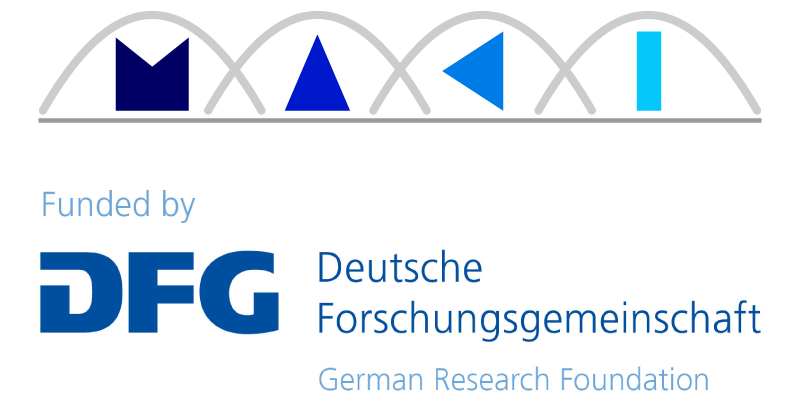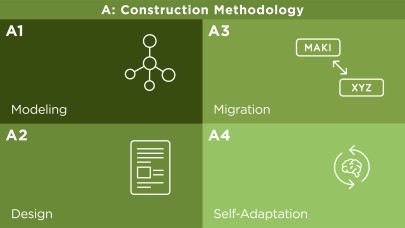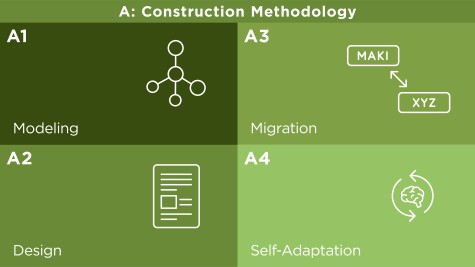Project area A (construction methodology) is concerned with the development of methods and principles utilized, adapted and refined within the context of subproject B (adaptation mechanisms) and subproject C (communication mechanisms). This includes the design of suitable communication system architectures in order to facilitate the efficient transitions between communication mechanisms at runtime and the detection and prevention of (system wide) unwanted interactions between concurrent transition processes. Furthermore, it develops modeling techniques used to describe system states as well as transitions between system states. These modeling techniques are especially relevant to subproject B as they assist in the planning and implementation process of transitions, i.e. to decide at what point, on which mechanism and at what level (individual, group, system) a transition should be taking place. Vice versa, subproject A relies on feedback from subprojects B and C to continually research, design, verify and refine the models and architectures required.
Subproject A, therefore, is responsible for the development of methods and techniques that are used to realize multi-mechanism adaptations for communication systems in the future. Through suitable abstractions, these methods and techniques assist engineers in the understanding of complex communication systems. They are essential for predicting a system’s behavior under a number of parameters and help to forecast a system’s performance curve during the development of transition mechanisms. At runtime, on the other hand, they can better evaluate the actual quality of a system through the use of measurement results.
Moreover, the aim is to explore innovative design principles for transition capabilities of communication mechanisms. In this context, basic components have to be investigated that support the adaptation and exchange of mechanisms, both within a communication layer and beyond. As a result, fundamental principles are developed to describe and enable the architectural construction of transition-capable communication systems as a whole.
The exchange of mechanisms on different communication layers may lead to negative interactions such as an undesired loss of quality. For this reason, theoretical principles and modeling concepts are designed to record the interdependencies and interactions between transitions and mechanisms on different communication layers and to coordinate transitions across these communication layers.
In order to deal with these fundamental issues most effectively, Subproject A is further divided into three subprojects:





